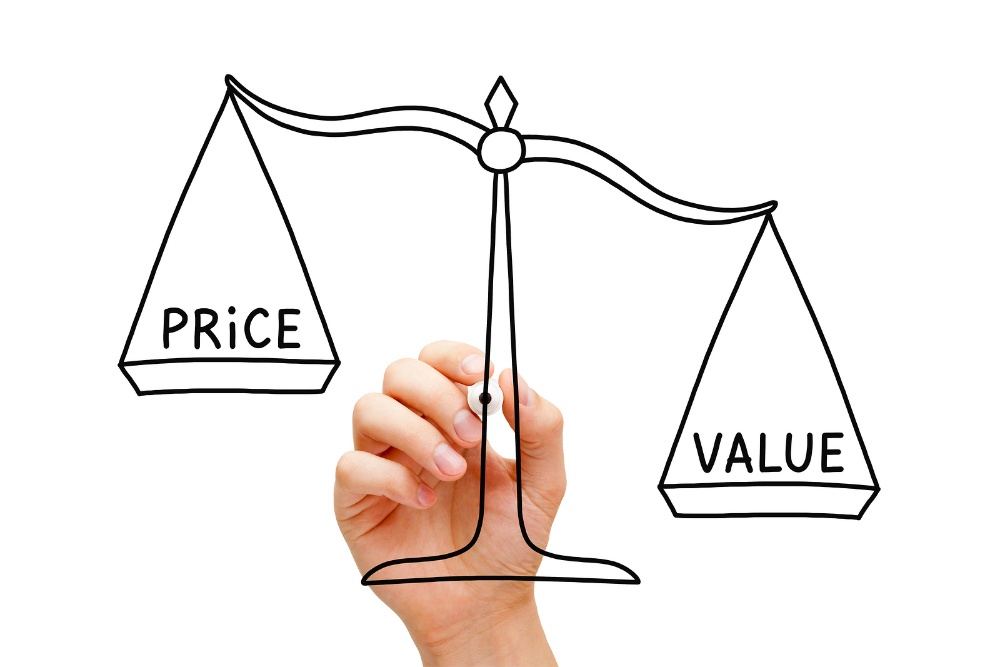
The price and value relationship - 4 tactics to employ
Over the past 6 months, how many times have you heard somebody say “We have to add/deliver/sell/prove value!”. Most likely, it’s somewhere in the high 30s. Thanks for the concrete advice on how not to sell on price.

Now, value selling is a technique that relies on building on the inherent value of a product or service. Sounds great. What does it really mean? It doesn't sound like a Keynesian supply and demand situation. How much value must one build to overcome pricing objections, particularly when dealing with complex sales?
Let’s look at four day to day tactics for building value while keeping the realities of pricing in mind.
Pinpoint
Here's a question to ponder: What value can you offer that your target customers are willing to pay (a premium) for?
I’m sure you have a plethora of USP’s and value propositions for everything you can deliver. However, the only thing that matters is what your customers really care about. Naturally, they want to know whether you can help solve a particular problem and whether you can you do it better – not necessarily cheaper - than anyone else. However, they don’t just want solutions – they need ideas. They want your insights and expertise. So start thinking creatively about areas where you can really help them with new perspectives and tangible benefits. This – you guessed it – provides value.
The bigger point is this: are you consistently answering this question for each and every opportunity in your pipeline?
Can you add more value than the competition?
Make a habit of listing both the known and likely competitors you will be facing in each opportunity. Disregard competitor pricing for a second. Instead, ask yourself if you can realistically solve this customer’s particular problem more effectively and, perhaps, creatively than any competitor? If you can’t, you might want to consider qualifying out. If you can, you need to center the sales conversation on this topic and move it up the agenda of all decision makers for this deal.
By now, your pipeline should only consist of opportunities that have a problem your products and services can realistically solve better than any competitor. Again, better - not cheaper.
Quantifying value - complement your RoI with a CoI
At a basic level, customer value is determined by weighing the benefit received against what one needed to give up in order to receive said benefit. In B2B sales, we must also add the important perspective of perceived risk into any buying decision – do the perceived benefits of a larger investment outweigh the perceived risks associated with the purchase and therefore propel a change from the status quo?
Rather than focusing on RoI, figure out ways to quantify the CoI, or cost of inaction. Remember that money is only one type of currency in this context – a cost of inaction calculation may also include things like time, likely declines in customer retention rates or other negative consequences.
While you might produce a 3 month RoI, a CoI can really help drive a sense of urgency. Perhaps you can demonstrate that keeping with the status quo over the next 3 months will result in 100+ hours spent on unnecessary administration and $200K+ of avoidable expenses for third party consultants.
When quantifying the value of your solution and working out the CoI, make sure it’s specific (how much or little, over what period?) and that you are transparent about the assumptions and methods used for arriving at the numbers presented. Customers will only buy in to your arguments if they buy in to how well they are supported.
That said, value may not always be tangible and easy for you to convert into measurable units. In these instances, why not ask the customer to define what something is worth to them? What would they be willing to pay for really great customer service, a great design or reliability?
Provide evidence
Value is hard to prove without a track record. Specifically, your prospective clients will seek confirmation that you can deliver on your promises from an outside source – preferably a company similar to them, which faced a similar set of challenges that you were able to address. Utilize your references, case studies, statistics and hard facts to ease any concerns and cement the value you bring to the table.

By Fredrik Jonsson
You know people that get excited about things like pomodoros and timeboxing strategies? Fredrik is one of them. He's also a former freelance writer and subsequently a man of many words. Words used to help companies take action on better ways to increase sales effectivenes. Fredrik is our Chief Content Officer at Membrain, the world's first sales software helping companies move from merely having a sales strategy towards executing it on a daily basis.
Find out more about Fredrik Jonsson on LinkedIn








